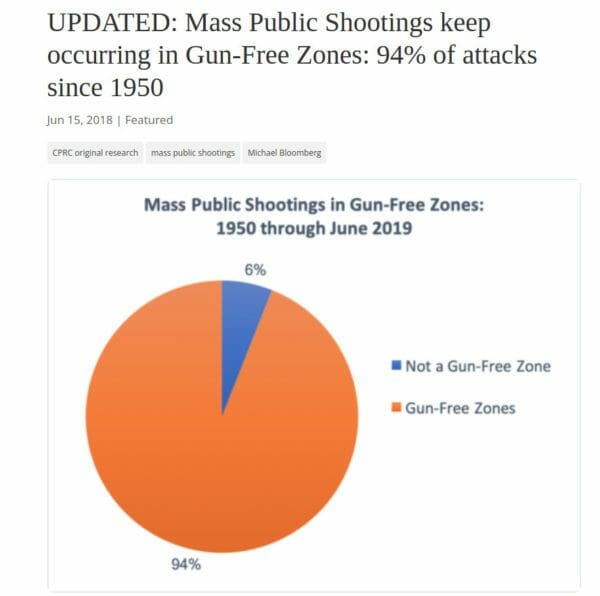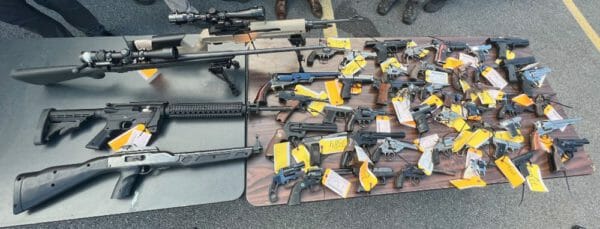A new poll shows overwhelming support for the Right to Keep and bear arms amendment to the Iowa Constitution.
A new Des Moines Register/Mediacom Iowa Poll found 58% of likely voters plan to vote for the proposed amendment in the Nov. 8 midterm election. Thirty-seven percent of likely voters would vote against it, and another 6% are not sure.
The great seal of Iowa features a citizen soldier armed with a musket. The Great Seal, has, in bold letters emblazoned on the banner near the top of the Seal:
"Our liberties we prize and our rights we will maintain."
In spite of those bold words, Iowa is one of only six states which do not have a protection in the state constitution for the right to keep and bear arms.
At the time of the adoption, in 1847, the right to keep and bear arms was not controversial.
The Chief Justice of the Supreme Court made the argument that black people could not be recognized as citizens, because if they were, they would have the same rights as white men. From the infamous Dred Scott opinion, bold added:
For if they were so received, and entitled to the privileges and immunities of citizens, it would exempt them from the operation of the special laws and from the police regulations which they considered to be necessary for their own safety. It would give to persons of the negro race, who were recognized as citizens in any one State of the Union, the right to enter every other State whenever they pleased, singly or in companies, without pass or passport, and without obstruction, to sojourn there as long as they pleased, to go where they pleased at every hour of the day or night without molestation, unless they committed some violation of law for which a white man would be punished; and it would give them the full liberty of speech in public and in private upon all subjects upon which its own citizens might speak; to hold public meetings upon political affairs, and to keep and carry arms wherever they went. And all of this would be done in the face of the subject race of the same color, both free and slaves, and inevitably producing discontent and insubordination among them, and endangering the peace and safety of the State.
The Dred Scott decision was written only ten years after the Great Seal was adopted by the state of Iowa.
Iowans thought their rights were protected by the Second Amendment. 174 years of experience has shown many powerful people have worked hard to negate the protections of the Second Amendment.
Iowa Second Amendment activists have been attempting to rectify the lack of protection in the Iowa constitution for several years. They have seen courts claim the militia clause of the Second Amendment rendered the right of the people toothless. They have seen courts, such as the Wisconsin Supreme Court, ignore protections which were considered to be plain, which is why the "fundamental right" and "strict scrutiny" language were added.
Here is the text of the amendment which will appear on the 2022 ballot:
Right to keep and bear arms. Sec. 1A. The right of the people to keep and bear arms shall not be infringed. The sovereign state of Iowa affirms and recognizes this right to be a fundamental individual right. Any and all restrictions of this right shall be subject to strict scrutiny.[4]
The procedure for amending the Iowa constitution is long and difficult.
First, the proposed amendment must be passed by both houses of the legislature.
Second, a regular election of the legislature must happen.
Third, the proposed amendment must be passed by both houses again.
Fourth, the proposed amendment is offered as a choice on the ballot of the next election.
If the proposed amendment passes by vote of the electorate, the amendment becomes part of the Iowa Constitution.
Proponents of the amendment started moving it in the Iowa legislature in 2017, the first year in decades when Republicans held control of both houses of the Iowa legislature.
Amendment proponents suffered a setback when the Secretary of State forgot to publish the amendment, as required by law, in 2018. This set back the effort on the amendment by two years, and another set of votes was required in both houses of the Iowa legislature.
In 2021, Iowa passed Constitutional Carry on April 2. There are now 25 states in the Constitutional Carry club.
In recent decades, several states have passed right to keep and bear arms amendments or upgrades.
Wisconsin Constitution’s Section 25 passed in 1998 with 74% of the vote. Kansas passed an amendment in 2010. It received 88% of the vote. Louisiana's amendment in 2012, passed with 74% of the vote. Alabama passed a similar amendment in 2014. It received 72% of the vote. Missouri strengthened their rkba amendment in 2014 with 61% of the vote.
On June 23, 2022, the Supreme Court published the Bruen decision. In the decision, the court eliminated the use of various "levels of scrutiny". If the rights protected by the Second Amendment were infringed upon, the laws infringing on them are unconstitutional, period. In the Bruen decision, the Second Amendment is considered a fundamental right, not a "second class" right.
The Second Amendment is now more protective than the proposed Iowa Amendment. The Iowa amendment cannot be changed. It will appear on the 2022 ballot as written.
Prediction: The Iowa constitutional amendment will pass by a large margin.
The right of Iowans to keep and bear arms will be protected in both the federal and state constitutions.
The five states which will continue without a protection for the right to keep and bear arms in their state constitutions are California, Maryland, Minnesota, New Jersey, and New York.
©2022 by Dean Weingarten: Permission to share is granted when this notice and link are included.
Gun Watch










 Image of Utica guns turned in: AG Letitia James' office[/caption]
Image of Utica guns turned in: AG Letitia James' office[/caption]






